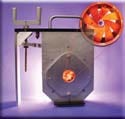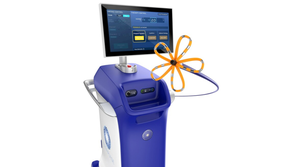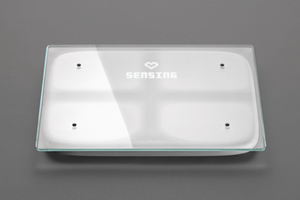Stent-Crimping and -Loading System Takes Up Residency in Catheterization Labs
April 12, 2004
Originally Published MPMNApril 2004
INDUSTRY NEWS
Stent-Crimping and -Loading System Takes Up Residency in Catheterization Labs
NorbertSparrow
|
Designed for crimping and loading stents with living tissues in catheterization labs, the HV100 comprises a sterilizable base and disposable segmental crimping mechanism. |
Segmental compression technology is at the heart of a line of equipment that fully or partially automates catheter and stent production processes. The proprietary crimping mechanism developed by Machine Solutions Inc. (MSI; Flagstaff, AZ; www.machinesolutions.org)provides an even, repeatable radial compression for stent-crimping and balloon-folding applications. MSI has adapted the technique to a new device that crimps and loads living-tissue products. The firm launched the product at MEDTEC in Stuttgart, Germany, in March.
Minimally invasive surgery (MIS) has made great strides in recent years. It will continue to progress as patients demand the use of less-invasive techniques. Minimally invasive stent placement procedures used today also will drive innovation, says James P. Kasprzyk, director of global marketing. "Several leading clinical investigators in the United States and Europe rely on labor-intensive hand loading to place stents with living-tissue components attached," he says. The HV100 crimping mechanism offers an alternative.
The device precisely reduces the diameter of large stents that have living tissue attached to them. To preserve tissueintegrity, the instrument operates partially submerged in a saline solution. The stent is crimped and loaded into a delivery system in the catheterization lab prior to the procedure. Precise stent and tissuereduction is critical to the success of the operation. It also ensures that the stentexpands evenly when it has been placed in the patient.
The HV100 provides consistent, repeatable radial compression and can be operated by a single person. Its small footprint makes it suitable for use in laboratory and bedside settings. The base unit is sterilizable, while the segmental compression mechanism is designed for single use.
MSI's initial customers likely will match the size of the disposable mechanism with their living-tissue stent products and package them together, says Kasprzyk. "We anticipate that this will be similar to the way in which stent and catheter companies currently sell accessory products such as inflation devices and y connectors." The sterilizable base will be sold directly to catheterization labs,he adds, probably by device OEMs.
Copyright ©2004 Medical Product Manufacturing News
You May Also Like



